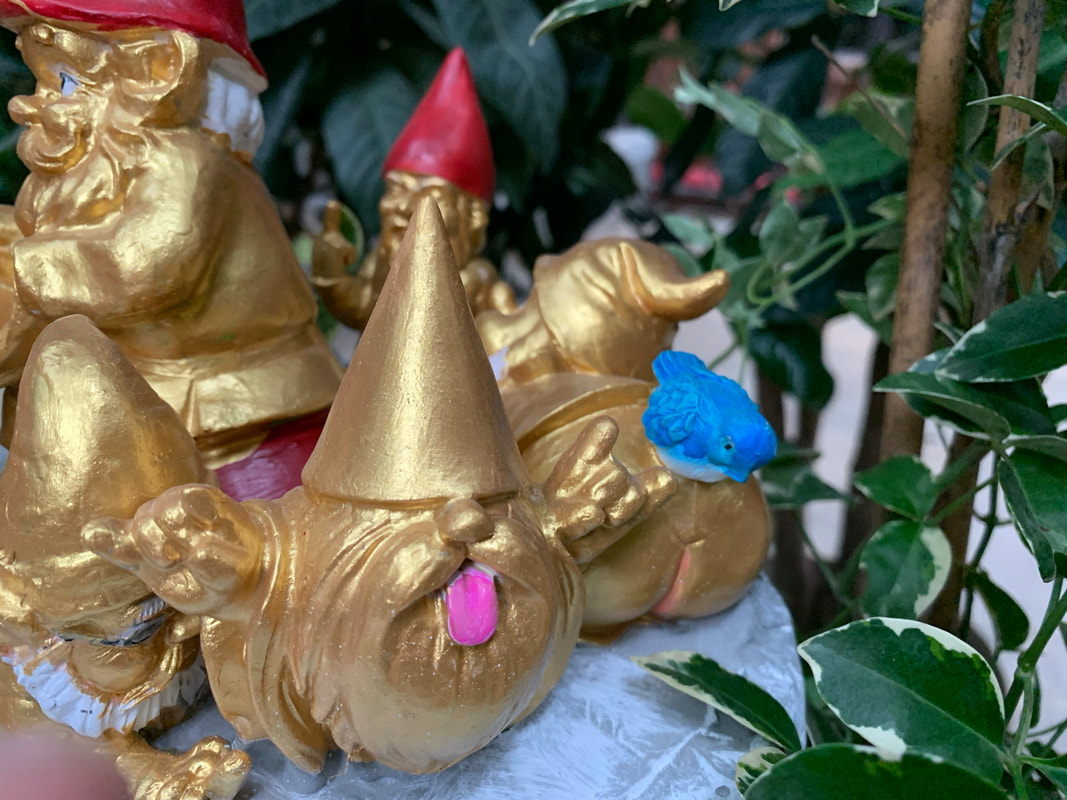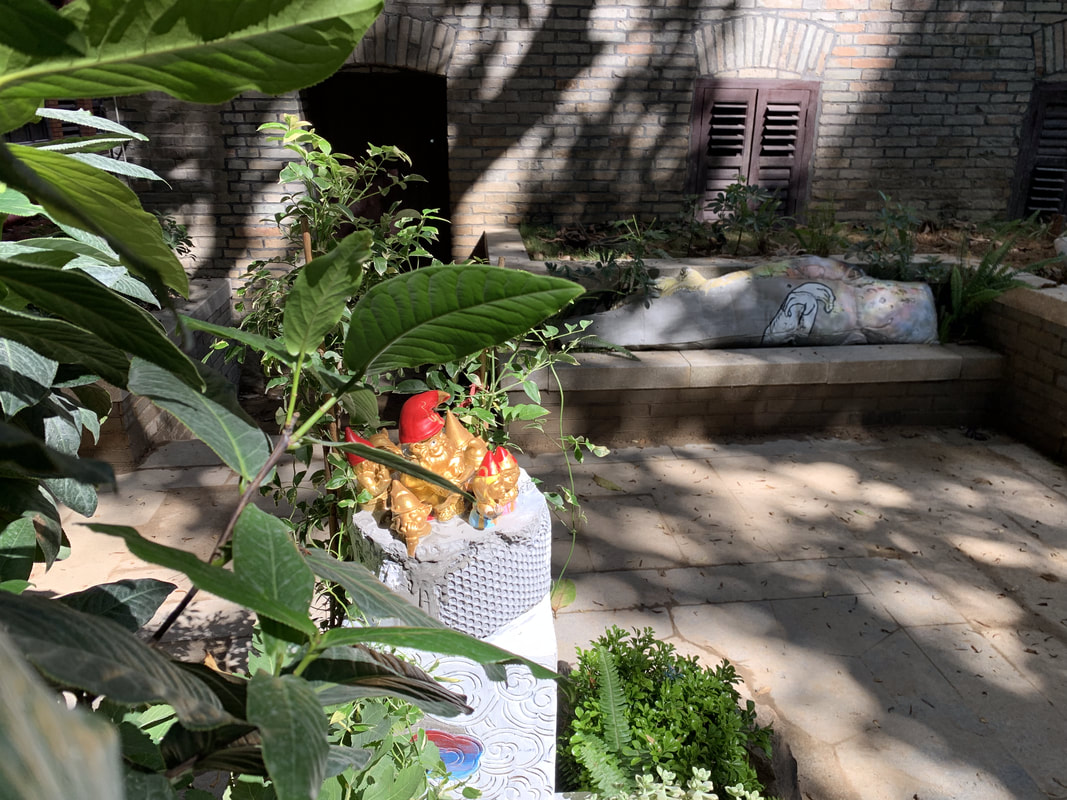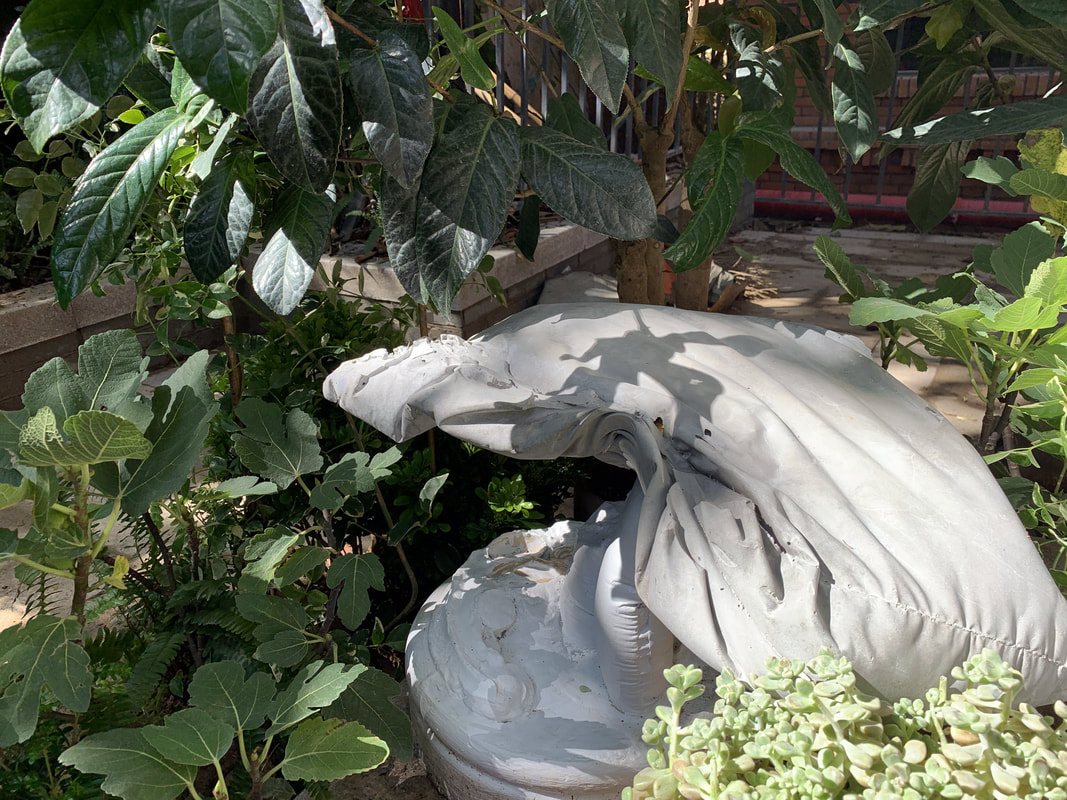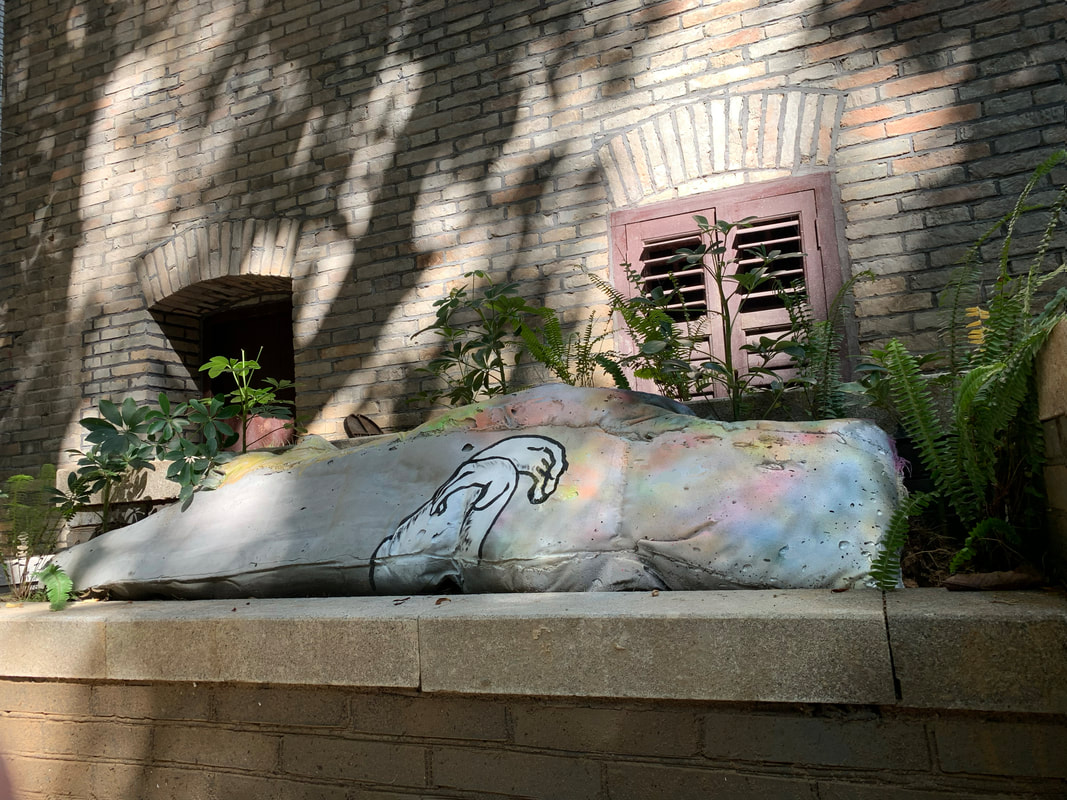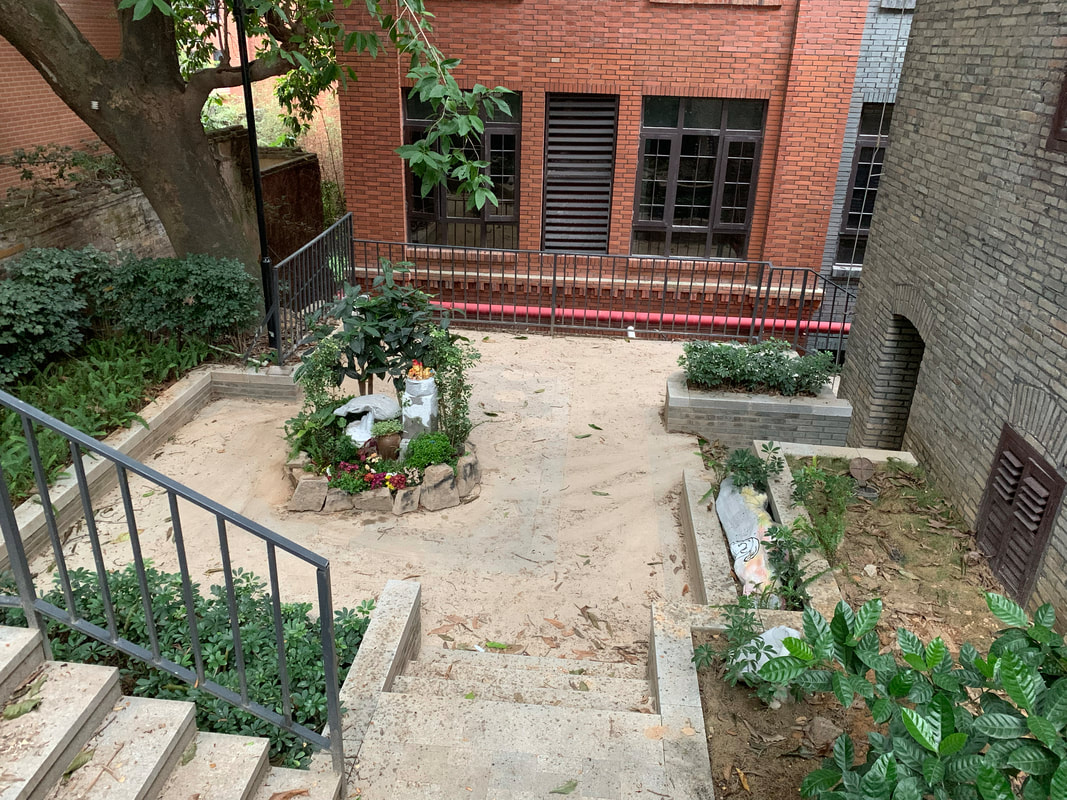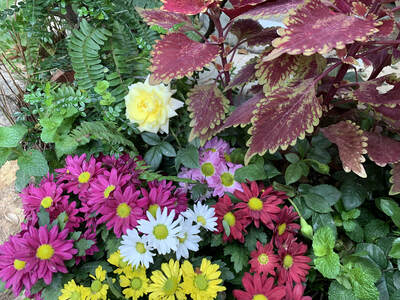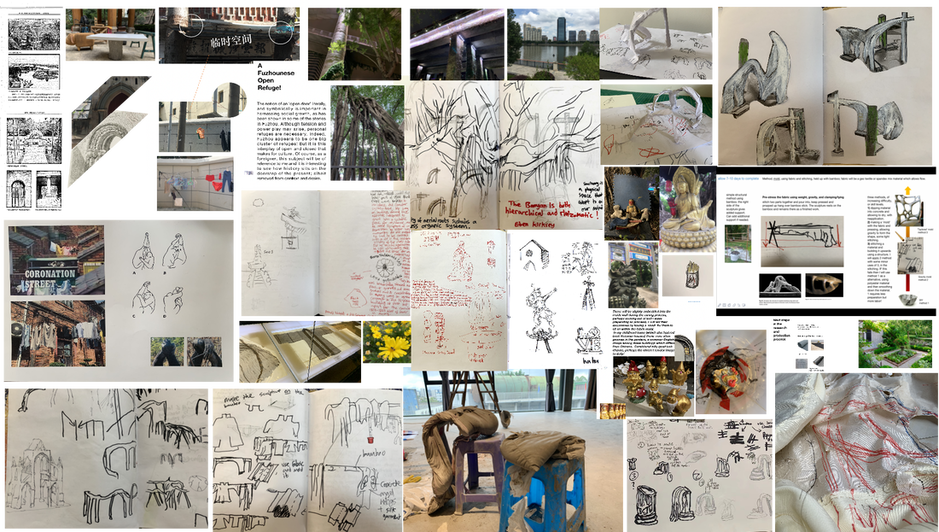'A Gift' 2021
concrete, gnomes, gold paint, spray paint, plants, flowers, and herbs.
concrete, gnomes, gold paint, spray paint, plants, flowers, and herbs.
A sculpture garden in response to Yantai, Fuzhou, Fujian in China. The work was made in a concrete factory, and comprises of concrete moulded from hand-stitched fabric forms which a mix is then poured into. A variety of fabrics were sourced locally for experimenting. After a few days of curing, the fabric is carefully stripped away. The concept changed throughout the 4 weeks of making; due to restrictions, learning outcomes, and time restraints. The garden was influenced by the material history of the city which retains evidence of its past as a ‘treaty port’, and the makeshift nature of locals that occupy outdoor spaces; illustrated by the washing lines and seating that cleverly utilise spaces. Fuzhou appears to be a place of many refuges; like the banyan tree which features prominently here, they grow and appear decentralised. It is a place that has been bombarded by religious moralising, government militarising and revolutionary politicising. But many of the local people; particuarly older generations, retain their rituals, superstitions, and behaviour among this modernisation. I interpreted this as a resistance; for better or worse. Previously, many of the foreign consulates appeared to either struggle, or avoid, integration; building their own recreational parlours, housing, and divisions. So I wanted to give a gift, a kind of decolonised public sculpture garden, which referenced the hybrid nature of cultural exchanges that spring up in the architecture; such as the baptist churches and temples. The red bricks reminded me of own childhood garden, and I wanted to incorporate this too. Local flowers, renamed by naturalist George Tradescant Lay are included. In an area that has few free, public outdoor spaces to retreat to, or to simply enjoy some quiet time, Fuzhou is often a noisy and difficult place to live. And yet the familiar story of rapid development and gentrification seemingly threaten this disorder that makes the place unique. I was initially inspired by my reading of chimpanzees who form their own cultural group identity through hand-clasps, and how the introduction and mutual acceptance of a foreign member created a new hybrid greeting. If culture is innate then it is also full of such potential morphologies.
research notes
